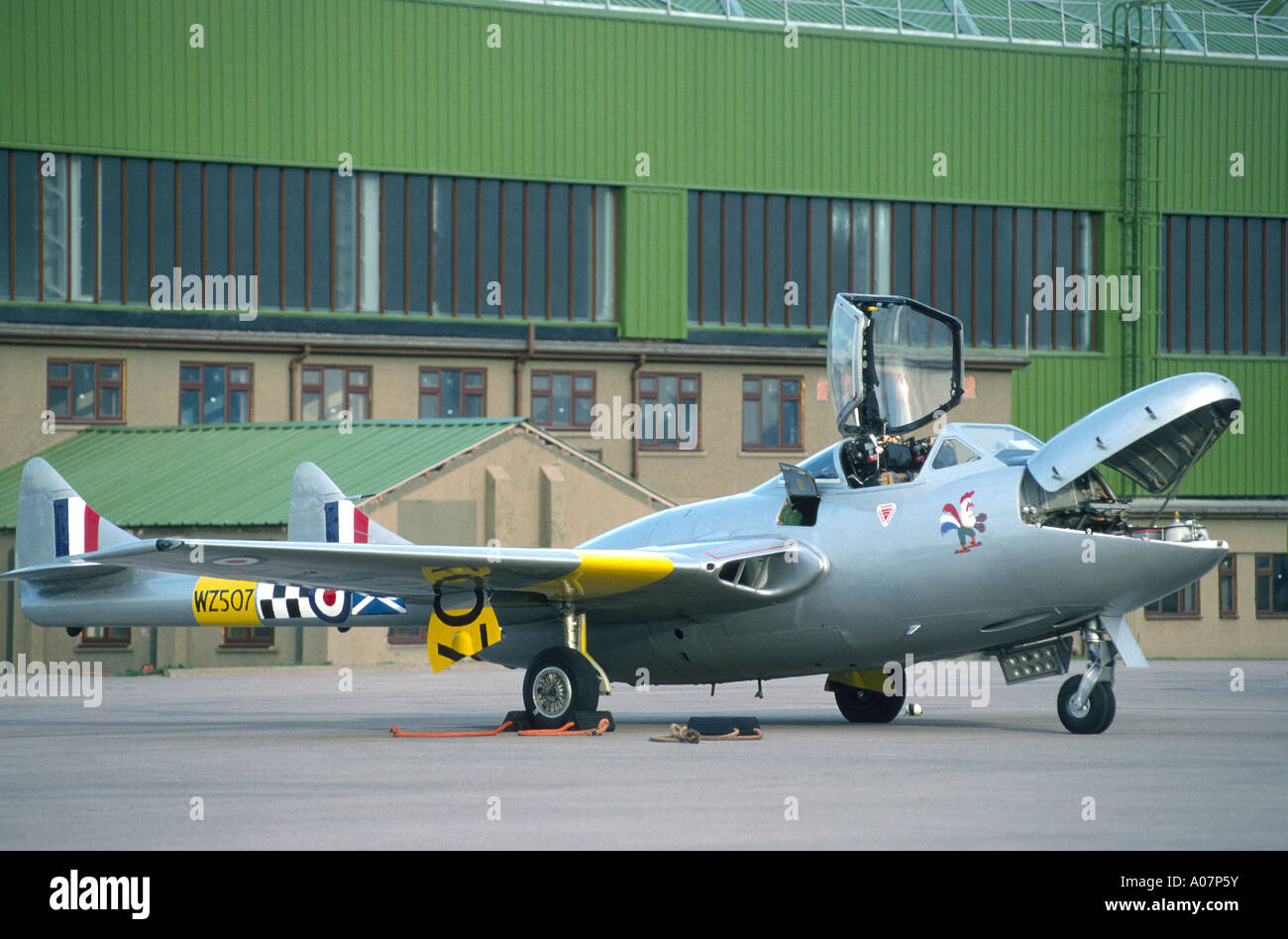The de Havilland DH 115 Vampire T11 two-seat jet trainer prototype. GAV 4024-383

Image details
Contributor:
David Gowans / Alamy Stock PhotoImage ID:
A07P5YFile size:
55 MB (2.7 MB Compressed download)Releases:
Model - no | Property - noDo I need a release?Dimensions:
5394 x 3563 px | 45.7 x 30.2 cm | 18 x 11.9 inches | 300dpiLocation:
RAF Leuchars, Fife. Scotland. United Kingdom.More information:
The de Havilland DH.100 Vampire was the second jet-engined aircraft commissioned by the Royal Air Force during the Second World War (the first being the Gloster Meteor), although it did not see combat in that conflict. The Vampire served with front-line RAF squadrons until 1953. It also served with numerous other air forces worldwide (see Operators). Almost 4, 400 Vampires were built, a quarter of them under licence. The Vampire began as an experimental aircraft, unlike the Gloster Meteor which was always specified for production. Under specification E.6/41, design work on the DH-100 began at the de Havilland works at Hatfield in mid-1942, two years after the Meteor. Originally named the "Spider Crab, " the aircraft was entirely a de Havilland project, exploiting the company's extensive experience in using moulded plywood for aircraft construction, as used in the Mosquito bomber. It was the last time composite wood and metal construction was used in high performance military aircraft. It had conventional straight mid-wings and a single jet engine placed in an egg-shaped, aluminium-surfaced fuselage exhausting in a straight line. To reduce the losses caused by a long jetpipe the designers used the distinctive tail with twin booms, similar to that of the Lockheed P-38. Geoffrey de Havilland Jr., the de Havilland chief test pilot and son of the company's president, test flew prototype LZ548/G on its maiden flight 20 September 1943 from Hatfield. The flight took place only six months following the Meteor's maiden flight. The first Vampire flight had been delayed due to the need to send the sole remaining flight engine to Lockheed to replace one destroyed in ground engine runs in the prototype XP-80. The production Vampire Mk I did not fly until April 1945 with most built by English Electric Aircraft due to the pressures on de Havilland's production facilities, busy with other types. Although eagerly taken into service by the RAF, it was still being developed at war's end,